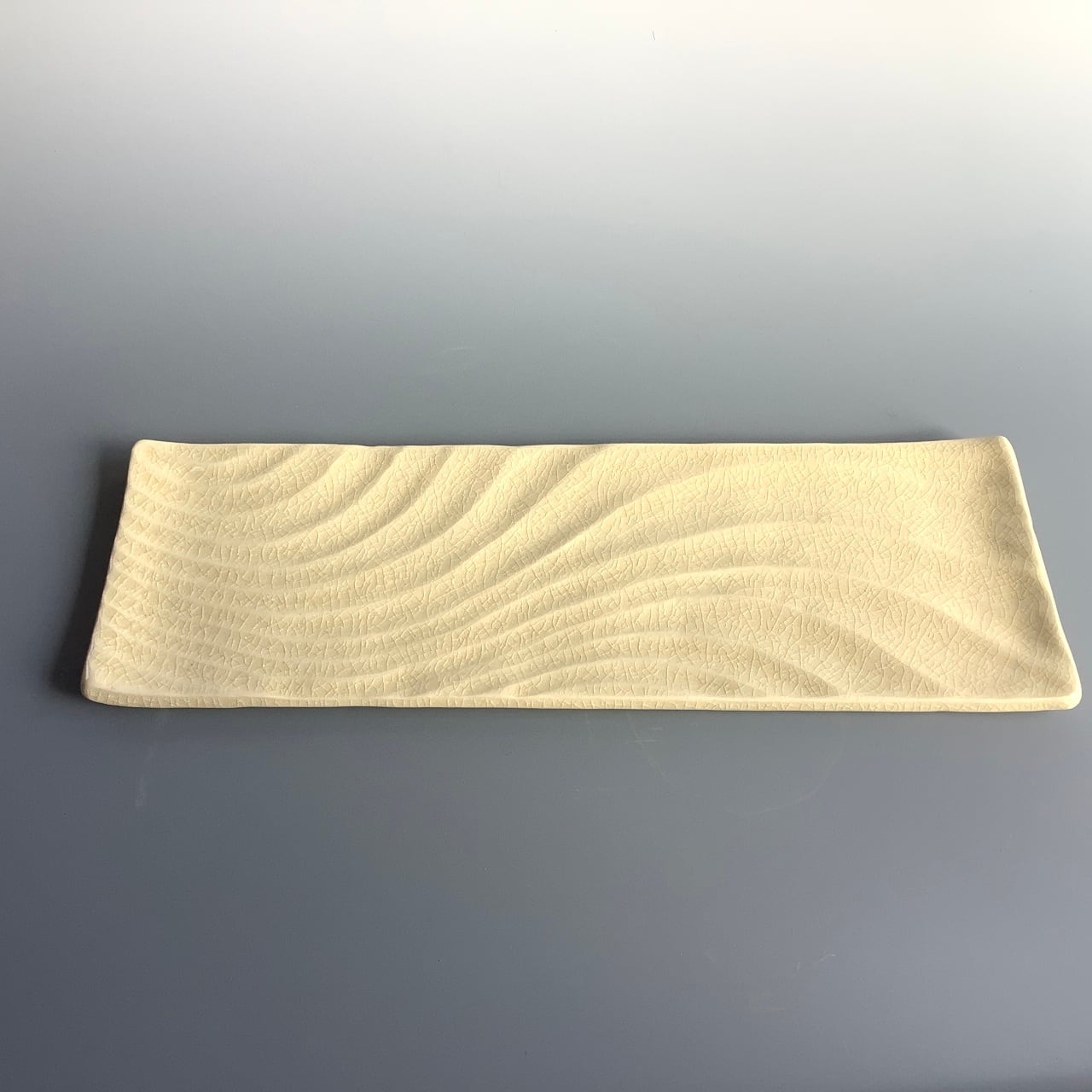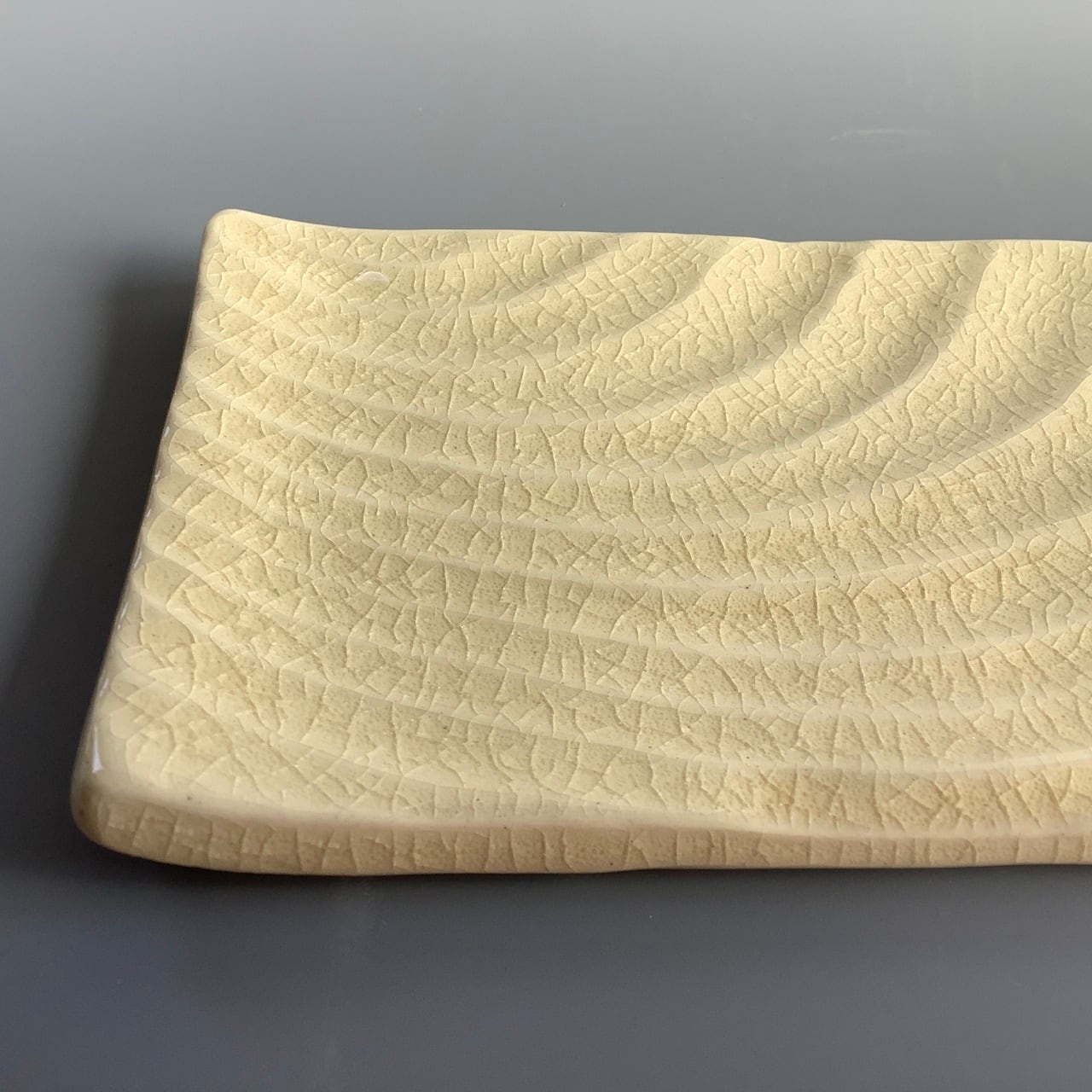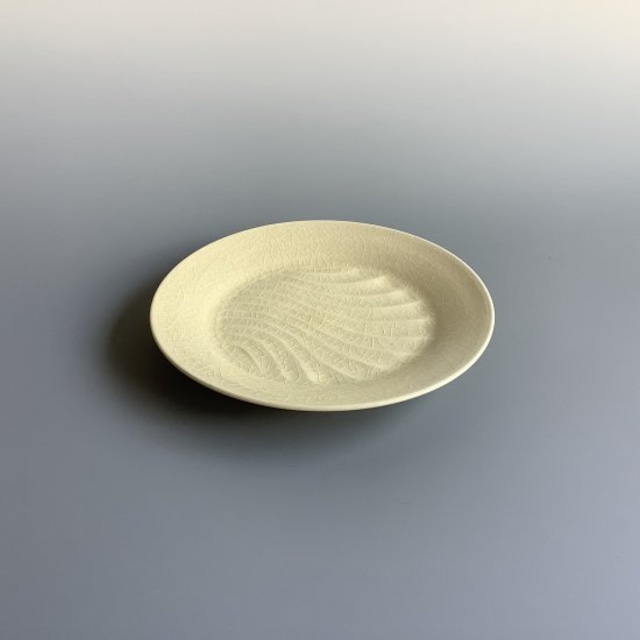波文 長角皿 Wave-patterned rectangular plate
¥15,200
SOLD OUT
縦11.5×横33㎝×高2㎝
薩摩焼きの伝統技法を用いた、美しい波文が特徴の長角皿です。白い陶器の上に彫られた波模様は、まさに絵画のよう。大海や砂浜の砂模様を思い起こされて、食卓に華やかさと上品さをプラスしてくれます。
この長角皿は、薩摩焼を代表する美しさを持つ一品です。製作は、陶芸家/荒木秀樹が手掛けています。波文は自作の道具を使い、一本一本丁寧に手で彫られています。
日本の伝統的な食器である長角皿は、おしゃれな食卓に欠かせません。和食はもちろん、洋食や中華料理など、様々な料理に合わせてお使いいただけます。食卓をもっと素敵に演出したい方にぴったりなアイテムです。
食器は大切な食事の時間を彩るもの。ぜひ、この波文の長角皿で特別なひとときを過ごしてみてください。
Dimensions: 11.5 cm (height) × 33 cm (width) × 2 cm (depth)
This beautiful rectangular plate features a wave pattern created using traditional Satsuma pottery techniques. The wave design etched onto the white ceramic resembles a painting, evoking imagery of the ocean or sandy beaches, adding both elegance and vibrancy to your dining table.
This rectangular plate embodies the exquisite beauty characteristic of Satsuma ware and is crafted by the renowned potter, Hideki Araki. The wave patterns are meticulously hand-carved using custom tools, ensuring each line is perfectly executed.
A traditional Japanese rectangular plate is an essential addition to any stylish table setting. Suitable for a range of dishes, from Japanese cuisine to Western and Chinese dishes, it enhances the presentation of any meal. Ideal for those looking to make their dining experience more refined.
Tableware plays a significant role in enriching mealtime. Enjoy a special moment with this wave-patterned rectangular plate.
※こちらの価格には消費税が含まれています。
※この商品は送料無料です。

□ 白薩摩とは? White Satsuma
「白もん」と呼ばれる白薩摩。薩摩藩の御用窯である苗代川(なえしろがわ)窯で多く焼かれていた陶器で、白い陶土を成形し透明釉をかけたもので表面の細かい「貫入」が特徴の一つ。
Known as 'Shiro-mon,' white Satsuma is a type of pottery predominantly produced at the Naeshirogawa kiln, the official kiln of the Satsuma domain. It features a white clay body covered with a transparent glaze, with fine 'crackle' patterns on the surface being one of its distinctive characteristics.
□ 貫入(かんにゅう)とは? Crackle-like lines
白薩摩の見どころの一つであり、作成工程の中で表面にできるひび状のもの。陶器の素地と釉薬の膨張・収縮率が異なるため焼き上げた際に生じます。光を受けて私たちに様々な表情を見せてくれます。
One of the highlights of white Satsuma is the crackle-like lines that appear on the surface during the creation process. These occur because the clay body and glaze have different expansion and contraction rates, and they reveal various textures when light hits them.







